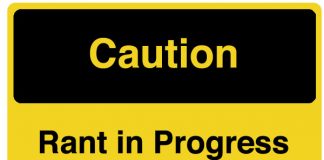Heres’ the latest reader question, along with my reply!
Sean asks: I always lower the air pressure in my truck’s tires by about 5 psi when it snows because this improves traction, or so I have been told. But does increasing the pressure have any benefit? I’ve been told it’ll give a noticeable improvement in fuel economy, by decreasing rolling resistance.
My reply: It’ll definitely give you a noticeable increase in ride harshness! Also, probably faster tread wear. How much of both – vs. how much you might save at the pump – is the calculation that needs to be done to determine whether it’s worth doing.
My 50:
Right now, gas is cheap. Tires are not. Even nothing-special all-seasons generally cost about $100 each, plus the cost of mounting them. But let’s say $400 for a set. If you have to buy a set a year sooner than you otherwise would have had to because of increased/premature tread wear it’s doubtful you’ll recover that in gas savings, at least given current gas prices.
Also: Some cars are also very sensitive to significant changes in tire pressure; you might experience weird handling/braking. Then again, maybe not.
This is one of those trial and error things. Give it a try – and let us know the results!
. . .
Got a question about cars, Libertarian politics – or anything else? Click on the “ask Eric” link and send ’em in!
If you like what you’ve found here please consider supporting EPautos.
We depend on you to keep the wheels turning!
Our donate button is here.
If you prefer not to use PayPal, our mailing address is:
EPautos
721 Hummingbird Lane SE
Copper Hill, VA 24079
PS: Get an EPautos magnet or sticker or coaster in return for a $20 or more one-time donation or a $10 or more monthly recurring donation. (Please be sure to tell us you want a magnet or sticker or coaster – and also, provide an address, so we know where to mail the thing!)
My latest eBook is also available for your favorite price – free! Click here. If that fails, email me at [email protected] and I will send you a copy directly!











I have found that as a tire wears, under normal pressure and usage, the outside edges wear first. After this wear has taken its course, I overinflate the tires a little bit to essentially, move that outmost edge inboard a little bit. Then, after being fully worn, my tires are really bald. They are tires in the academics sense in that they are round and hold air!
If the outside edges wear first, then your tires are underinflated.
You’re doing something wrong. My tires wear all the way across evenly. I might run them at 55 psi at times and then go to 80psi when I need it. The wife’s Cutlass LS had the tires wear evenly with 42.5 psi on the front and 30 on the rear and it handled really well too. Tires aren’t a “one size, one pressure fits all” when you have everything from 14’s to 20’s and every width and sidewall height imaginable. I don’t run the same pressure in the front and back on my pickups yet they wear evenly.
There is a “chalk test” to determine the ideal tire pressure for Your Tires on Your Car (as loaded at time of test). But I’ve never tried it since I don’t have a convenient patch of pavement anywhere near home, and I’m not going to drive somewhere and mess around in some public parking lot. The goal is for the tread to be absolutely flat and the pressure on the ground equal across the width of the tread.
Lowering tire pressure (really low, like 8-10 psi) is great for sand and other off road driving. But I’m not so sure about snow because you want the tire to cut down through to the ground. These wider and wider tires are getting ridiculous for winter driving. I guess that’s why everybody now needs AWD just to drive a few blocks to the grocery store.
Anon, I saw this guy get stuck in about 4″ of mud. He had some of those super-wide tires on some 22″ wheels. I laughed at him and said the wife’s car would cruise through that like nothing. He was embarrassed enough he got in and gave it hell like I told him to(spin those tires fast and they clear) and got out. City slickers, just amazing.
Up here you can get stuck in about 1″ of mud.
It’s just like grease when it gets wet. You don’t leave footprints, you carry them with you.
Seriously, you can get a set of tires for $400? The last set I bought 3 years ago was $1250. My cousin bought a new set for his one ton single wheel Dodge. Those big stock wheels really run it up. He paid $1850 so I’m guessing he doesn’t do a lot of tire spinning.
Hi Eight,
Yup; I did, recently – for my truck. But they were not gnomesayin’ sized – on 18 or 19 inch ree-uhms. Just 15x7s, 225/70-15.
eric, I use Load Range E regardless of the size of load I might pull simply because of mesquite thorns. The old Z has 16’s but BFG is really proud of them. I used load range E trailer tires too for the same reason.
To give you an idea of what a mesquite thorn is like, a few years ago I had a hot wire around the house and part was on the tank dam which was pretty steep. Not thinking about the difference in going up and going down, I went over it in my clogs(dumbass)but coming back I realized I’d need to walk quite a distance to get to level ground. I put my hand on the fence post and half way over I stepped on a mesquite limb I didn’t see in the grass. It stopped me in my tracks. I finally realized I’d just have to continue and put my full weight on that foot and tough it out. Back at the barn I had to dig around with some needle nose pliers to find the thorn and pull it out from the bottom since it was stuck through the top and my foot was captured. My foot was sort of a mess for a week or more. I’d take my sock off with my boots on and the sock would be stuck to my foot. You don’t wear sneakers in the pastures here.
Can’t get E range tires for 15″ wheels … sigh
225/70r15 is what I run on my little lightweight Jeep. That’s what it came with and I had to buy a new spare so when I went to buy new tires of course I just bought the same size even though I would prefer 225/75. Original plan was to go to LT235/75r15 but it really doesn’t need that.
I got the warranty so that if I ruin one on a rock or something, they have to give me four brand new ones 🙂
PS: the Jeep is stock, Not lifted
Strange my comment was “Anonymous”. But you can get load range E tires starting at 14″ for trailers. I had a friend do it for his F250 he was planning on selling so he jerked the Hankook load range E’ off his trailer and ran them on the pickup. They weren’t much for traction although they worked pretty well since he farmed in sand like I do.
I didn’t even notice the name … I knew EXACTLY who had written the comment – LOL
And yeah, those old mobile home tires. I can’t imagine anyone using them on a car or pickup. Most of my experience with those has been blowouts.
BTW, some others are using my name but I am @realAnonymous 🙂
Mobile home tires are speed rate to 45 mph unless they’ve been changed. But regular load range E or F on a trailer work fine on a pickup you don’t plan to drive 100mph with a load. They wouldn’t be good in mud but definitely work fine in sand. They are sorta weird looking because of being so narrow.
Spot on comments as usual Eric. But here’s a caveat or two we can add to that.
In my case I drive less than 5k miles per year (I’m retired) with both of my cars and those 70k rated tires will probably rot out well before the tread-wear indicators start showing. Therefore I reap the extra mileage without fear of tire wear, and I really don’t notice any handling or ride comfort differences to boot. And since under-inflated tires will also wear prematurely, I never have to worry about that problem, which I guess many people are guilty of due to lack of attention. This is all small potatoes of course & it may sound like I’m splitting hairs, but I’m a tightwad (and getting worse with all the ridiculous events over the last month) and it seems to work for me.